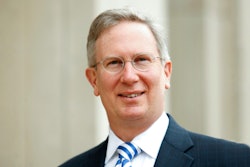The COVID-19 pandemic has worsened higher education’s already-dire economic crisis. Moreover, “shared governance and academic freedom” face an “existential threat,” according to a new report released by the American Association of University Professors (AAUP).
 Dr. Irene Mulvey
Dr. Irene Mulvey“Decades of divestment and chronic underfunding at the state and federal level have brought higher education to a precarious tipping point,” said Dr. Irene Mulvey, president of AAUP and a mathematics professor at Fairfield University.
The analysis, titled the “Annual Report on the Economic Status of the Profession,” looked at three previous AAUP studies, including its April 2021 Faculty Compensation Survey, which collected data from almost 380,000 full-time faculty members at 929 institutions.
Among AAUP’s findings are that over two-thirds (67.9%) of institutions surveyed saw full-time faculty’s real wages decline in 2020-21 (after adjusting for inflation). And more than half, or 55 percent, of the report’s 929 institutions froze salaries or reduced wages in response to the pandemic. Additionally, over a quarter cut or reduced fringe benefits. Indeed, real wages for full-time faculty this past year declined for the first time since the Great Recession, according to AAUP.
The report points to four main, compounding factors of this crisis: declining state and federal fiscal support, increasing overreliance on contingent faculty (i.e. non-tenure track, or adjunct, professors), growing administrative staff and salaries, and mounting institutional debt.
But not all faculty or institutions suffered blows this year, the report reveals. The country’s few highly selective, well-endowed research universities mostly enjoyed gains during COVID-19 with an increase in student enrollment and faculty employment as well as a larger endowment. The report cautions against examining its averages or totals alone, which distort the reality of the pandemic’s unequal toll on higher education.
“Most colleges and universities in this country are not the large, prestigious research institutions that fared well. For the rest of us, times are tough,” said the report’s author Glenn Colby, a senior researcher for AAUP.
For example, while the number of faculty members increased 1.9% overall from 2019-20 to 2020-21, the number of full-time faculty members decreased at 61.5% of institutions. That gap also points to how institutions that tend to teach and employ more women and people of color were especially hurt. The Labor Department estimated that among the 650,000 people whose jobs at colleges and universities were lost between February 2020 and February 2021, more than half were women and more than half were people of color.
“That’s a real concern,” said Colby. “This pandemic did not impact us all the same.”
The report also details an increasing dependence on faculty who are not tenured or tenure track, also known as adjuncts or contingent faculty. About three-quarters of all faculty in the country are contingent, according to the AAUP. Conditions for some full-time contingent faculty in recent years improved. Yet the report states that many this year were laid-off or had a dip in wages despite greater teaching loads.
“I’ve taken PhDs and their families to food banks, things have been so bad,” said Caprice Lawless, chair of the AAUP’s Committee on Contingency and the Profession, who argues that improving the conditions of non-tenured professors is key to protecting academic freedom and strengthening overall economic growth.
“The Biden administration is talking a lot about lifting the middle class. To do that, I think we need to raise the wages for contingent faculty so that we can exercise shared governance,” said Lawless, an adjunct professor. “It makes no sense to exclude from university decision-making the very teachers who are on the front lines if we want to better prepare people to enter the working world from the classroom.”
However, part-time faculty data was not in the AAUP report because most institutions do not consistently track this cohort, the association said. AAUP notes in the report that this absence is “highly problematic” but warned that “anecdotal evidence indicates that part-time faculty members… have endured terrible economic hardship this year, but without more data we can only speculate.”
While student loans have captured national attention, mounting debt at colleges and universities is another often overlooked part of higher education’s economic crisis, which the report outlines. According to education policy doctoral student Eleni Schirmer, who is pursuing her degree at the University of Wisconsin-Madison, universities have taken out loans to operate in lieu of public financing. Schirmer sees this as an anti-democratic trend.
“Debt is expensive with interest and fees. But this is a problem of power, not just numbers,” said Schirmer. “The legal contracts of debt stipulate creditors get paid first. The more universities take on debt to then function on credit, the more credit rating agencies get into the business of managing universities.”
According to the AAUP report, in fiscal year 2018-19, U.S. colleges and universities had a total of over $336 billion in long-term debt, or a 71.1% jump since the Great Recession’s fiscal year of 2008-09.
The report concludes by calling on policy makers and legislators to invest more in “substantially readjusting academic salary levels” to “avoid irreparable harm to the U.S. higher education system.” It also urges faculty to analyze institutions’ public financial statements to better understand the economic reality of their college or university.
“If I were at a small liberal arts school struggling with declining enrollment and mountains of debt at this point, I would be concerned,” added Colby.
Rebecca Kelliher can be reached at [email protected]
Editor’s Note: In an earlier version of this story, we incorrectly reported that 650 of the institutions included in the AAUP report, froze salaries or reduced wages in response to the pandemic. The story has been updated to reflect the correct number of 929 institutions. Diverse regrets the error.



















